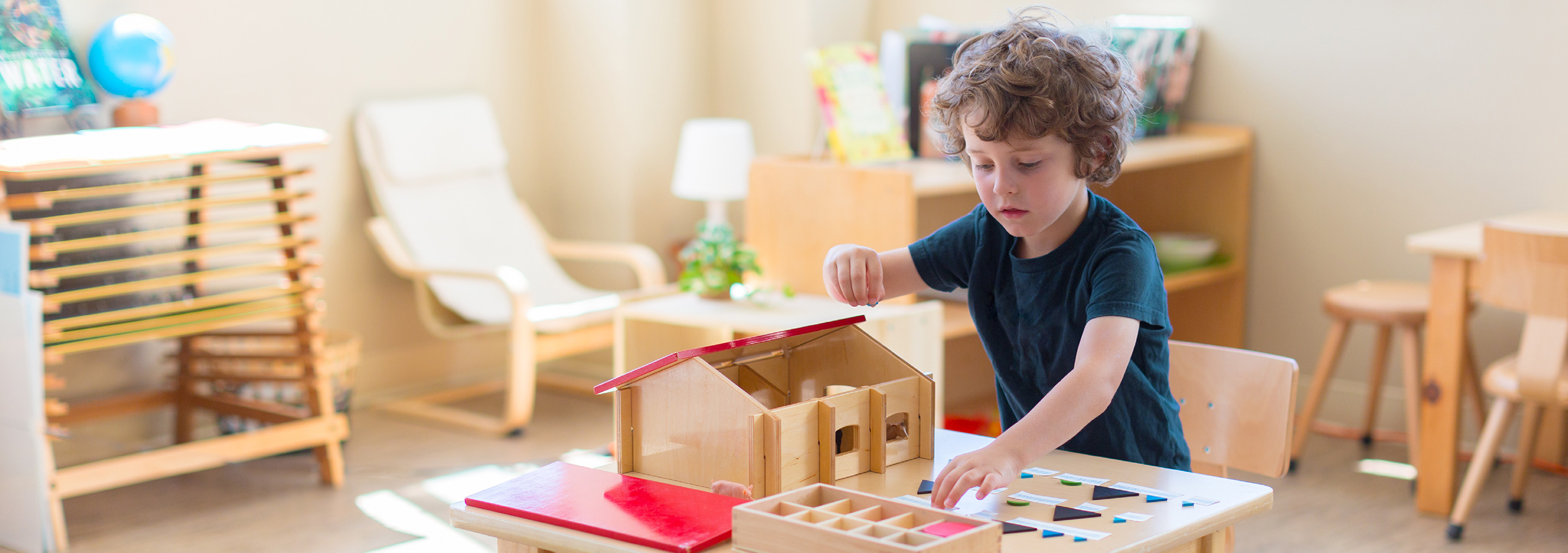- View All
- Topics
- Search
Topics
Blog Archive
-
2025 (1)
- January (1)
-
2024 (12)
- December (1)
- October (2)
- September (1)
- August (1)
- July (1)
- June (1)
- April (1)
- March (1)
- February (1)
- January (2)
-
2023 (9)
- September (1)
- August (1)
- July (1)
- June (1)
- May (1)
- April (1)
- March (1)
- February (1)
- January (1)
-
2022 (3)
- December (1)
- November (1)
- September (1)
-
2021 (3)
- November (1)
- March (1)
- February (1)



Supporting Your Child’s Independence At Home
Incorporating Montessori principles into your home environment can significantly enhance your child’s newfound independence, a notable transformation many parents observe as their toddlers and preschoolers embark on Montessori education. Here are practical ideas to support your child’s blossoming independence at home:
Designated Storage Spaces:
Set up simple storage spots near the front door for your child’s belongings. A small rug or a basket for shoes, along with hooks for jackets, encourages independent entries and exits, reducing potential meltdowns. Adding a small stool facilitates easy access.
Accessible Kitchen Setup:
Make your kitchen child-friendly by finding a low shelf or drawer for cups, placemats, and utensils. Opt for glass cups and inexpensive ceramic plates that can withstand occasional accidents. Involve your child in setting the table, using a bigger step stool or a learning tower for counter-height activities. Encourage self-feeding, mirroring the practices in Montessori classrooms.
Organized Play Areas:
Simplify the play area by displaying fewer toys on open shelves, promoting visibility and easy access for your child. Small chairs and tables create spaces for independent snack time and organized play. Provide cleaning tools like buckets, sponges, and child-sized brooms for your child to tidy up after play.
Dressing Independence:
Facilitate independent dressing with low, open shelves, racks, a mirror, and a bench with grooming tools. Even 2- or 3-year-olds can start dressing independently, especially if outfits are pre-selected the night before or simple choices are prepared in advance.
Consider a Low Bed:
Transitioning from a crib to a floor bed or a low twin mattress fosters a sense of independence in sleep arrangements. Some Montessori parents opt for infant floor beds, creating a safe and accessible sleep space.
Accessible Books and Reading Spaces:
Make books easily accessible throughout your home, encouraging your child to grab a book instead of reaching for electronic devices. Create cozy reading areas to promote a love for reading.
To witness your child’s growth in independence, you don’t need to overhaul your entire home. Choose one or two ideas at a time, making gradual changes. Even if you think your child is too young to benefit from these opportunities, you may be pleasantly surprised, echoing the experiences of Montessori Academy parents who have shared their excitement with us.